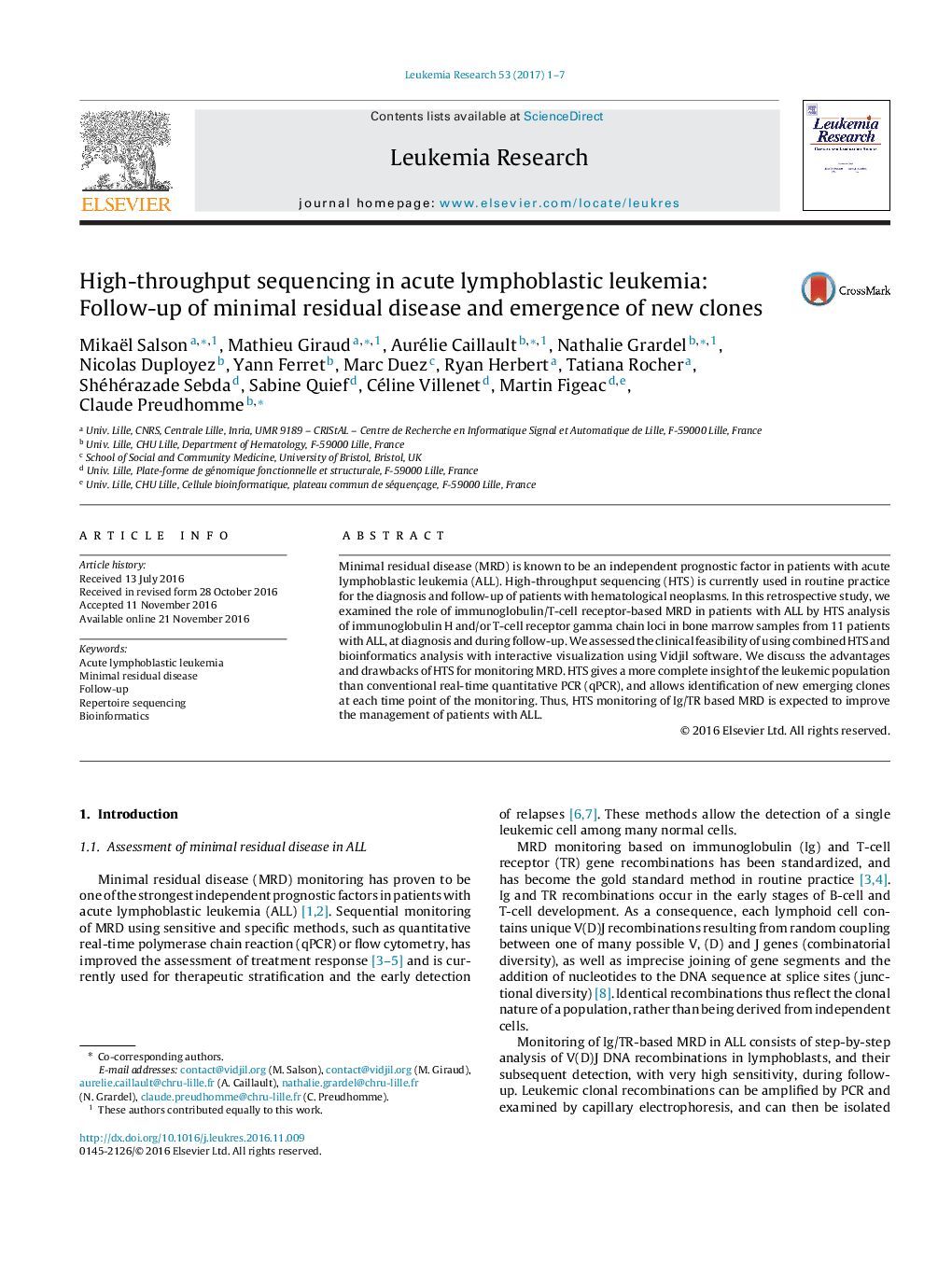| کد مقاله | کد نشریه | سال انتشار | مقاله انگلیسی | نسخه تمام متن |
|---|---|---|---|---|
| 5527873 | 1547895 | 2017 | 7 صفحه PDF | دانلود رایگان |
- Repertoire sequencing (RepSeq) gives a deep insight of leukemic lymphoid populations.
- High-throughput sequencing identifies new emerging clones at the time of relapse.
- Clones of low abundance at diagnosis may become relapsing clones.
- The Vidjil software enables both automated and interactive analysis of RepSeq data.
Minimal residual disease (MRD) is known to be an independent prognostic factor in patients with acute lymphoblastic leukemia (ALL). High-throughput sequencing (HTS) is currently used in routine practice for the diagnosis and follow-up of patients with hematological neoplasms. In this retrospective study, we examined the role of immunoglobulin/T-cell receptor-based MRD in patients with ALL by HTS analysis of immunoglobulin H and/or T-cell receptor gamma chain loci in bone marrow samples from 11 patients with ALL, at diagnosis and during follow-up. We assessed the clinical feasibility of using combined HTS and bioinformatics analysis with interactive visualization using Vidjil software. We discuss the advantages and drawbacks of HTS for monitoring MRD. HTS gives a more complete insight of the leukemic population than conventional real-time quantitative PCR (qPCR), and allows identification of new emerging clones at each time point of the monitoring. Thus, HTS monitoring of Ig/TR based MRD is expected to improve the management of patients with ALL.
Journal: Leukemia Research - Volume 53, February 2017, Pages 1-7
